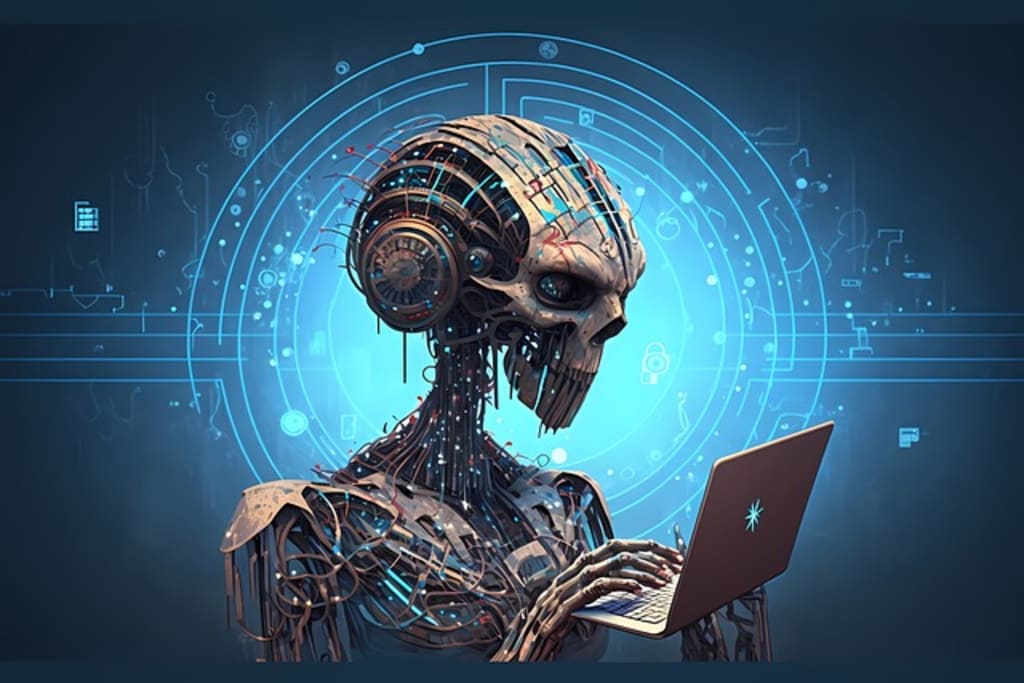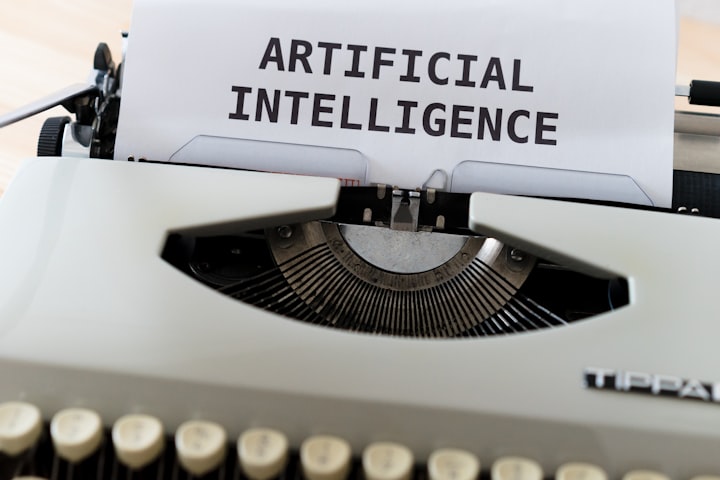Understanding Machine Learning
The Foundation of Artificial Intelligence

Artificial intelligence (AI) has become a buzzword in the tech industry, but at its core, AI relies on machine learning to function. Machine (ML) learning is a subset of AI that involves training algorithms to recognize patterns in data and make predictions or decisions based on that data. Understanding machine learning is critical to understanding AI and its potential applications. In this article, we'll explore what machine learning is, the types of machine learning, its relationship to AI, and the importance of ML in today's world.
Definition of Artificial Intelligence (AI)
AI refers to the ability of machines to perform tasks that typically require human intelligence, such as perception, reasoning, and learning.
What is Machine Learning?
Machine learning is a subset of AI that involves training algorithms to recognize patterns in data and make predictions or decisions based on that data. Machine learning algorithms are designed to learn from data, without being explicitly programmed to do so. In other words, they learn by example, rather than through explicit instructions.
Explanation of Machine Learning (ML)
ML is a subset of AI that involves training machines to learn from data, without being explicitly programmed. In other words, machines learn from patterns in data, rather than being given explicit instructions.
The Relationship between AI and ML
ML is a key component of AI. AI can be achieved through a combination of several techniques, including ML. While AI is the broader concept, ML is the specific approach used to achieve AI in many cases.
Importance of AI and ML in Today's World
AI and ML are becoming increasingly important in today's world. They are being used in a wide range of applications, including natural language processing, computer vision, and predictive analytics.
Types of Machine Learning

There are three main types of machine learning: supervised learning, unsupervised learning, and reinforcement learning.
Supervised learning involves training a machine learning algorithm on a labeled dataset. The labeled dataset includes inputs and outputs, and the algorithm learns to predict the output for new inputs based on the patterns it recognizes in the labeled dataset. The goal is for the machine to learn to make predictions or decisions based on new, unlabeled data.Supervised learning is used in a wide range of applications, from speech recognition to image classification.
Unsupervised learning involves training a machine learning algorithm on an unlabeled dataset. The algorithm learns to recognize patterns and structures in the data without any predefined outputs. Unsupervised learning is used in clustering, anomaly detection, and dimensionality reduction applications.
Reinforcement learning involves training machines through a system of rewards and punishments. The machine learns to take actions that lead to rewards and avoid actions that lead to punishments. Reinforcement learning is used in game-playing applications, robotics, and autonomous vehicles.
Data and Machine Learning
Data is essential to machine learning. The quality and quantity of the data used to train a machine learning algorithm can have a significant impact on the accuracy and performance of the algorithm. The data is typically split into training data and testing data.
The training data is used to train the algorithm, and the testing data is used to evaluate the performance of the algorithm on new data. Data preprocessing, such as normalization and feature scaling, is often required to prepare the data for machine learning.
Evaluating Machine Learning Models
One of the challenges in machine learning is to build models that generalize well to new, unseen data. Overfitting and underfitting are two common problems that can occur when training machine learning models.
Overfitting occurs when the model is too complex and fits the training data too closely, resulting in poor performance on new data. Underfitting occurs when the model is too simple and fails to capture the underlying patterns in the data.
To evaluate the performance of a machine learning model, cross-validation is often used. Cross-validation involves splitting the data into training and testing sets multiple times and calculating the average performance over those splits.
Bias and Fairness in Machine Learning

Machine learning algorithms are only as good as the data they are trained on. If the data is biased, the algorithm will learn that bias and perpetuate it. Bias in machine learning can occur in many forms, such as demographic bias or historical bias.
Fairness in machine learning is about ensuring that the algorithm's predictions are unbiased and do not discriminate against any particular group. Techniques for mitigating bias and ensuring fairness in machine learning are an active area of research.
Techniques in Machine Learning
There are many techniques and algorithms used in machine learning. Some of the most commonly used techniques include decision trees, neural networks, and deep learning. Decision trees are a popular algorithm used for classification and regression tasks. They are a simple but effective way to model decisions and their possible consequences. Neural networks are a popular algorithm used for a wide range of applications, including image recognition and natural language processing. They are designed to mimic the structure and function of the human brain.Deep learning is a type of neural network that involves multiple layers of interconnected nodes. It is used for tasks such as image and speech recognition. Feature selection and engineering are also important techniques used to improve the performance of machine learning models. Clustering and dimensionality reduction techniques are used to identify groups or patterns in the data, and to reduce the complexity of the data, respectively.
Optimizing Machine Learning Models
Optimizing machine learning models involves tuning the model's hyperparameters to improve its performance. Hyperparameters are parameters that are set before training the model, such as the learning rate or the number of hidden layers in a neural network. Techniques for optimizing hyperparameters include grid search and randomized search.
Applications of Machine Learning
Machine learning has many applications, from natural language processing (NLP) to computer vision and predictive analytics. In NLP, machine learning is used for tasks such as sentiment analysis, text classification, and language translation. In computer vision, machine learning is used for tasks such as image classification, object detection, and facial recognition. Predictive analytics involves using machine learning to make predictions about future events or outcomes. ML is also used in a variety of other applications, such as recommendation systems, healthcare, and finance.
AI Online and AI Chatbots

AI online and AI chatbots are becoming increasingly popular in today's world. They use ML to understand and interact with users in a natural way.
Definition of AI Online and AI Chatbots
AI online refers to the use of ML in online applications, such as websites and mobile apps. AI chatbots are virtual assistants that use ML to interact with users through natural language.
How AI Online and AI Chatbots Use Machine Learning
AI online and AI chatbots use ML to understand user input, recognize patterns, and generate responses that are relevant and helpful.
Importance of AI Online and AI Chatbots
AI online and AI chatbots are becoming increasingly important in today's world because they provide a more natural and efficient way for users to interact with online applications.
Conclusion
Machine learning is a critical component of artificial intelligence. Understanding the different types of machine learning, the importance of data, evaluating machine learning models, bias and fairness in machine learning, techniques used in machine learning, optimizing machine learning models, and the applications of machine learning are all important aspects of understanding machine learning and its relationship to AI. As machine learning and AI continue to advance, the potential for these technologies to impact our lives in meaningful ways is only set to increase.
We have only scratched the surface of what is possible with ML and AI, and the future looks bright for this rapidly evolving field. As we continue to develop new applications and refine our techniques, we will be able to create more intelligent and sophisticated machines that can help us to make better decisions, solve complex problems, and improve our lives in countless ways.
If you are interested in learning more about ML and AI, there are many resources available online, including courses, tutorials, and communities. Whether you are a student, a professional, or simply curious about this exciting field, there are many opportunities to explore and learn.
In conclusion, ML and AI are transforming the way we live, work, and interact with the world around us. By understanding the relationship between these two concepts, we can better appreciate the power and potential of this rapidly evolving field. Whether you are a researcher, a developer, or simply interested in the latest technology, there has never been a better time to get involved in the world of ML and AI.
This article created for educational purposes and #chatgpt4theassist.
About the Creator
Oscar Opten
Behind a veil of anonymity, a guide to the mysteries that lurk in the shadows. Join us on a journey to unravel the unexplained and expand your mind.





Comments
There are no comments for this story
Be the first to respond and start the conversation.